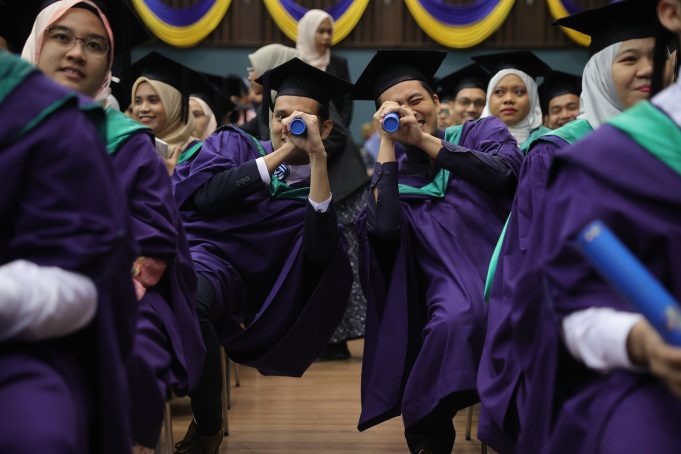By: Professor Dr Ahmad Ibrahim
DESPITE past attempts to transform the economy, we struggle to escape the middle income trap. There are still gaps in our economic formula. Household income remains a major issue. Our wage level, for example, has not kept pace with inflation and rising costs. This explains why we face problems coping with price shocks, especially of food items. We saw this very episode in the recent rice controversy.
We usually succumb to knee jerk reactions. We are noted for using price control which we know is unsustainable. Developed economies do not normally practice price intervention. They leave that to market forces. The instrument of subsidy, especially blanket subsidy, is equally troublesome. Both price intervention and subsidy are open to abuse. Both are costly to the economy. Many know the solution lies in strengthening the people’s income. Most experts agree moving the economy into high income will help.
Easier said than done. What is clear is that the economy has grown addicted to low value businesses. Apart from the volatility in commodities, low cost labour is a common feature of such businesses. Most such low skilled labour are imported. It is not easy to have an efficient system to bring in such labour force. Cases of labour abuse are inevitable. This
creates problems for our exports as international rulings on labour standards are enforced.
We have seen reports of how some of our products have failed to enter markets on account of non-compliance with international labour rulings. The sectors most dependent on such low cost labour include the plantation and construction. Both do not seem to progress much in terms of adopting new technologies. During the Covid pandemic, there was some attempt to transform. But the momentum failed to pick up steam as conditions returned to normal. Even in manufacturing, much of our business are in the lower value assembling operations. The higher value is in design and branding, which we are not so strong.
How do we migrate towards the more high technology business? MIGHT, Malaysian Industry Government Group for High Technology, has tried for years to do just that. Through conducting technology foresights, MIGHT has identified the business sectors where high value jobs can be created. A few that comes to mind includes aerospace, smart cities, and precision manufacturing. The progress has been mixed. There is still that lethargy in growing such businesses.
Attracting the appropriate investments, both FDIs and DDIs, has been challenging too. One key obstacle is the dire need for talents in such hi-tech sectors. This is where higher education has an important role to play. It has been suggested that skill development and R&D must cater more to the hi-tech sectors. R&D should also emphasise more applied rather than basic. As of now, our R&D spending is more skewed towards fundamental. As a developing country, such imbalance in R&D allocation is unwise. Furthermore, we have limited resources. Whatever basic research we do must support closing the knowledge gap to enable applied research, especially those which have good potential for commercialization.
The present higher education blueprint should end in 2025. Talks of a new blueprint have been announced. Many suggest stakeholder engagements should start now. This must be thorough and inclusive. It is very important for some comprehensive analysis of the expiring blueprint. What aspects are no longer relevant? What were achieved in the last
plan? And what remains unexecuted?
Very often, in drafting new blueprints, little consideration is given on the lessons from the earlier plan. Very often we start from scratch. Strategy experts suggest this practice must change. The monitoring and evaluation of any new blueprint must be made clear, especially the unit or institution responsible to undertake the regular assessment. Sharing the outcome of the assessments with key stakeholders should be standard practice. Very often the data are kept classified. Apart from a clear communication strategy, collaboration among stakeholders must be made mandatory. Unless there is such reimagining of the higher education blueprint, it is impossible to effectively generate the right talent to future proof the economy.

The writer from Tan Sri Omar Centre for STI Policy, UCSI University and Associate Fellow Ungku Aziz Centre, University Malaya

















